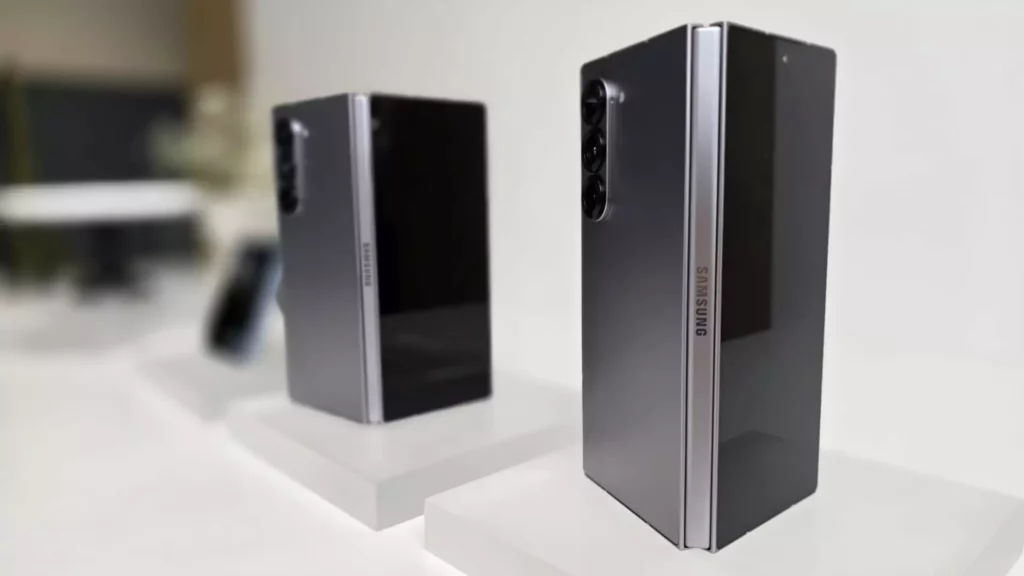As technology races forward, the competition in the foldable smartphone arena accelerates at an unprecedented pace. Samsung’s anticipated release of a new, thinner flagship model invites scrutiny of the prevailing obsession with sleekness in mobile design. Since Samsung introduced its first foldable handset in 2019, the landscape has transformed dramatically. While the original offering painted a promising picture of the future, featuring devices that could morph into expansive screens while maintaining compactness, today’s narrative leans heavily on aesthetic appeal and thinness as the ultimate virtue. This begs the question: are we chasing true innovation, or merely a superficial trend driven by consumer whims?
The emergence of formidable Chinese competitors like Oppo and Honor has altered the foldable smartphone battleground. Their recent models are not just slimmer; they epitomize the evolving consumer expectations for portability, suggesting that thick and bulky devices may soon be relegated to the technological graveyard. As these rivals unveil devices that boast just over 8 millimeters in thickness, Samsung finds itself in an uncomfortable position, compelled to reassess its design principles. This is a clear indication that functionality can no longer be sacrificed for size; quite the contrary, it has become integral to the consumer experience.
The Numbers Don’t Lie: Real-World Impact on User Experience
Consider the stark differences in specifications among the top models: the Samsung Galaxy Z Fold6, at 12.1 millimeters in thickness, pales in comparison to the Oppo Find N5’s sleek 8.93 millimeters and the Honor Magic V3’s 9.2 millimeters. These numbers do more than reflect dimensions; they transform the user experience, making the choice between devices one of ergonomic preference rather than just brand loyalty. While consumers may have once viewed foldability as the main selling point, increasingly, it is the comfortable, lightweight nature of smartphones that sways their purchasing decisions.
The data illuminates an uncomfortable truth for Samsung: even with its formidable brand presence, a reluctance among consumers to embrace foldable technology is palpable. With projections indicating that foldable phones will capture a mere 2% of the overall smartphone market this year, those in the industry must confront the reality that without addressing usability concerns, folding devices may languish in obscurity. The challenge is twofold—create a product that matches the slender aesthetic of competitors while ensuring that real-world usability is not relegated to a secondary concern.
The Specter of Apple: Potential Game Changer or Empty Threat?
Amidst this competitive tumult lies another specter—the impending arrival of Apple into the foldable phone market. For years, Apple has taken a conservative approach to design innovation, which raises intriguing questions. If Apple launches a foldable iPhone within the next year, not only will it validate the foldable category, but it will also disrupt the current dynamics among manufacturers. Apple has a unique ability to set trends, and its design sensibilities may raise the bar in terms of what consumers expect from foldable devices.
Crucially, though, Apple is not simply playing catch-up; it has an unparalleled knack for introducing game-changing features that redefine user interaction. If the tech behemoth successfully integrates robust functionality with sleek design into its foldable offering, it will put immense pressure on Samsung to respond effectively. The specter of Apple looms large, suggesting that companies must innovate beyond aesthetics to capture consumer interest seriously.
Consumer Education: The Key to Revolutionizing User Engagement
The present situation underscores an undeniable truth: consumer education around foldable technology will need to advance concurrently with device innovation. Today’s buyers are cautious, often skeptical about the practicality of foldable models. Companies must not only focus on making devices lighter and thinner but also engage in informing potential customers about the unique benefits they offer. Initially, it may be the flashy innovations that attract attention, but lasting success will depend on brand narratives that highlight the practical facets of foldable phones.
As Samsung braces itself for the arrival of its thinnest foldable model yet, it must be acutely aware that merely achieving a slimmer profile will not suffice. The narrative within the smartphone industry is shifting, driven by both competitive forces and changing consumer expectations. Manufacturers are not just racing toward thinner designs; they are recalibrating their approach to mobile technology and user experience. The challenge of balancing aesthetics, productivity, and practicality will dictate the trajectory of foldables for years to come.
In this rapidly evolving ecosystem, Samsung stands at a crucial juncture. The choices made in the coming months will determine whether the brand can regain its footing or risk being outpaced by more agile competitors. The real question remains: will consumers be won over by aesthetics alone, or will substantive innovation and practicality ultimately dictate their choices in this brave new world of foldable smartphones?









Leave a Reply